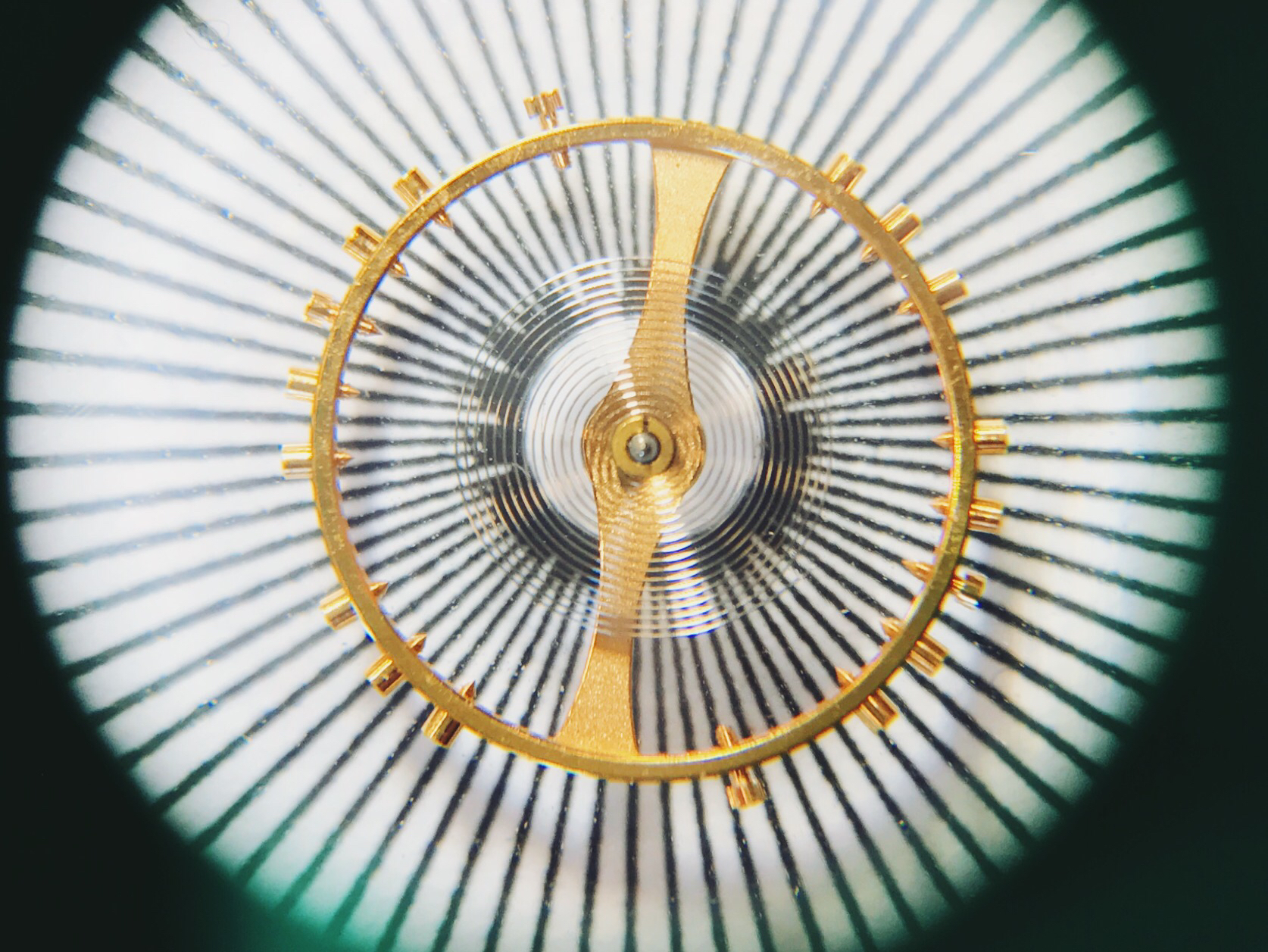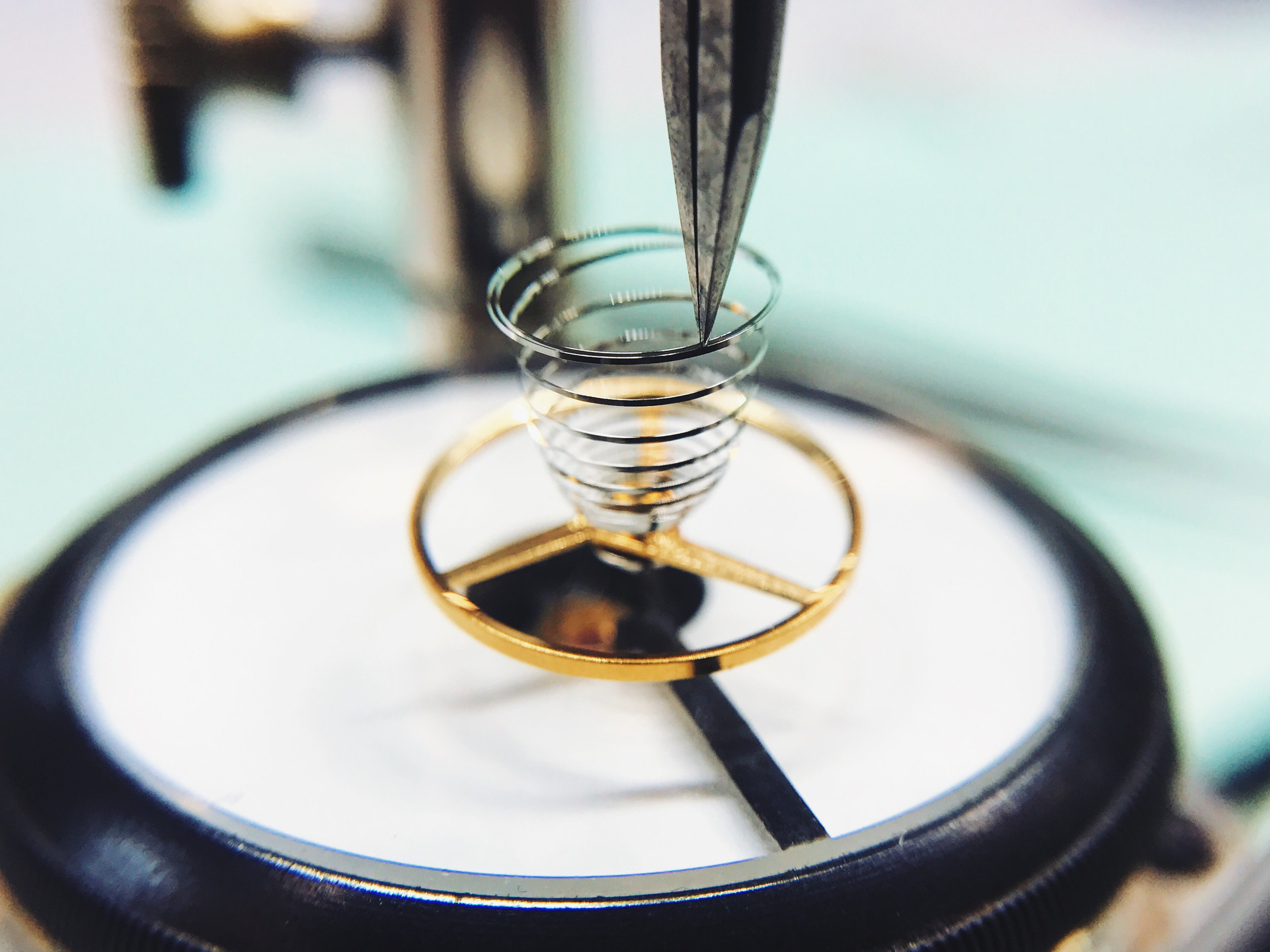Vibrating Hairsprings

Well this is a fun challenge: we're vibrating hairsprings—about a year ahead of schedule!
The hairspring is the organ that keeps time in a watch, in concert with the balance wheel. It acts in a similar fashion to a pendulum, though it spins, rather than swings.
Vibrating a hairspring is one of the hardest things we'll ever have to do in our program (as far as watchmaking goes), and we're getting our first taste at just 9 weeks into our education. Bring it on!
A balance (that's what the balance wheel and the hairspring assembly is called, in aggregate), oscillates at a fixed rate, measured in beats per hour. In a 6497, it oscillates 18,000 times per hour; in the 7750 and most modern wristwatches, it oscillates at 28,800. This works out to 2.5 or 4 Hz of vibration—the faster the beat, the more accurate a movement becomes, though it also becomes that much more sensitive to misadjustment and servicing.
We're starting with the 6497, for all of the same reasons that we've used it before: it's bigger and easier to handle, it's cheaper and it's more friendly to beginners. That said, this part of the program is usually begun in the 2nd year, so we're really beginners.
The first step in the vibration process is to assemble the balance wheel and poise it, which we've already done. Now we have to find the point on the hairspring that will vibrate the balance at the exact speed. The longer the spring, the slower the balance will swing; the shorter the spring is, the faster it will go.
Finding the vibration point is decidedly low-tech, yet effective. We're using antique vibrating tools, which house a perfectly-calibrated and oversized balance beneath a glass plate. Above the reference balance is an articulated arm which can clamp our spring. If you clamp the spring at the right point, the balance wheels will spin at the same speed... But that takes practice and testing.
To find the vibrating point, you start at the end of the spring and work your way in. It's tedious and careful business, but it works. Once you find it, the wheels will spin in perfect harmony (within an acceptable range of error).
Finding the vibrating point is just the first step, and there are many hours of adjustment to follow. We'll be learning those too.
Watchmaking student at the Lititz Watch Technicum, formerly a radio and TV newswriter in Chicago.





